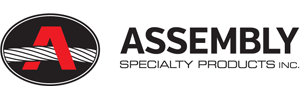OSHA Guide – Cranes and Derricks in Construction
MENU
- Introduction
- Employer Responsibilities
- Section 1400 – Scope
- Section 1401 – Definitions
- Section 1402 – Ground Conditions
- Sections 1403-1406 – Assembly and Disassembly
- Sections 1407-1411 – Power Lines
- Section 1412 – Inspections (with Section 1435(f)-Tower Crane Inspections) and Section 1436(p)-Derricks Inspections)
- Section 1413 – Wire Rope Inspection
- Section 1414 – Wire Rope – Selection and Installation Criteria
- Sections 1415 Safety Devices & 1416 Operational Aids
- Section 1417 – Operation
- Section 1418 – Authority to Stop Operation
- Section 1419-1422 – Signals
- Section 1423 – Fall Protection
- Section 1424 – Work Area Control
- Section 1425 – Keeping Clear of the Load
- Section 1426 – Free Fall and Controlled Load Lowering
- Section 1427 – Operator Qualification and Certification
- Section 1428 – Signal Person Qualifications
- Section 1429 – Qualifications of Maintenance & Repair Employees
- Section 1430 – Training
- Section 1431 – Hoisting Personnel
- Section 1432 – Multiple-Crane/Derrick Lifts
- Section 1433 – Design, Construction and Testing
- Section 1434 – Equipment Modifications
- Section 1435 – Tower Cranes
- Section 1436 – Derricks
- Section 1437 – Floating Cranes/Derricks and Land Cranes/Derricks on Barges
- Section 1438 – Overhead & Gantry Cranes
- Section 1439 – Dedicated Pile Drivers
- Section 1440 – Sideboom Cranes
- Section 1441 – Equipment with a Rated Hoisting/Lifting Capacity of 2,000 Pounds or Less
- Directory of States with Approved Occupational Safety and Health Programs
- Workers’ Rights
- OSHA Assistance, Services and Programs
- OSHA Regional Offices
- NIOSH Health Hazard Evaluation Program
Section 1413 – Wire Rope Inspection
Wire rope must be inspected as part of the shift, monthly, and annual inspections required by section 1412. The shift and monthly inspections must evaluate all rope that is visible during the shift in which the inspection is conducted. The annual inspection must include the entire length of the rope. The shift and monthly inspections must pay particular attention to the following:
- Rotation resistant wire rope in use
- Wire rope being used for boom hoists and luffing hoists, particularly at reverse bends
- Wire rope at flange points, crossover points, and repetitive pickup points on drums
- Wire rope at or near terminal ends
- Wire rope in contact with saddles, equalizer sheaves, or other sheaves where rope travel is limited
In addition to these items, the annual inspection must include:
- Those sections that are normally hidden during shift and monthly inspections
- Wire rope subject to reverse bends
- Wire rope passing over sheaves
You must take certain action if an inspection reveals a defect in the rope. Some defects require either that the rope be removed from service or the damaged section be severed. For others, the inspector must evaluate whether the defect constitutes a safety hazard, with the corrective action depending on the outcome of the evaluation. Note that, if a wire rope must be repaired or replaced, either the equipment (as a whole) or the hoist with that wire rope must be tagged-out during the repair/replacement process.
Severing Wire Rope
Where severing the rope is permitted, the section that is damaged must be discarded. Two undamaged sections may not be spliced to make a longer rope. If the undamaged part that remains is too short for the drum to have two full wraps of rope when the load and/or boom is in its lowest position, the rope cannot be used and must be replaced.
Electrical Contact with Power Line
Wire rope that has made electrical contact with a power line (either by the rope, the equipment, or the load contacting the line) must be immediately removed from service even if no damage is visible. The rope may have suffered internal damage that cannot be repaired.
Defects that Require Removal from Service or Severing
The following defects require that the rope either be removed from service or the defective part severed.
- Visible broken wires, as follows:
- In running wire ropes: six randomly distributed broken wires in one rope lay, or three broken wires in one strand in one rope lay, where a rope lay is the length along the rope in which one strand makes a complete revolution around the rope
- In rotation resistant ropes: two randomly distributed broken wires in six rope diameters, or four randomly distributed broken wires in 30 rope diameters
- In pendants or standing wire ropes: more than two broken wires in one rope lay located in rope beyond end connections, or more than one broken wire in a rope lay located at an end connection
- A diameter reduction of more than 5% from nominal diameter
- In rotation resistant wire rope, core protrusion or other distortion indicating core failure.
- A broken strand.
Exception: If the wire rope manufacturer has approved different criteria for visible broken wires or diameter reduction, you may follow those criteria instead of those above.
Defects that Require Evaluation
The following defects must be evaluated by the inspector to determine whether they constitute a safety hazard:
- Significant distortion of the wire rope structure such as kinking, crushing, unstranding, birdcaging, signs of core failure, or steel core protrusion between the outer strands
- Significant corrosion
- Electric arc damage (from a source other than power lines) or heat damage
- Improperly applied end connections
- Significantly corroded, cracked, bent, or worn end connections (such as from severe service)
If these defects are found to be hazardous: The rope must be removed from service or the defective part severed.
If they are not found to be an immediate hazard: You may continue to use the rope. However, if such a defect is identified during an annual inspection, you must check it during each monthly inspection. Note that this may require a more complete monthly inspection than would otherwise be required because the annual inspection must cover the entire rope and may reveal a defect in a part of the rope that would not normally be visible during a shift or monthly inspection.

